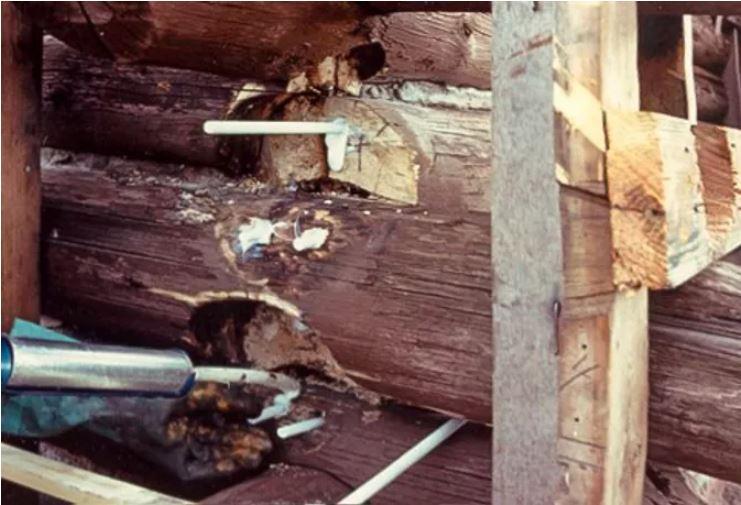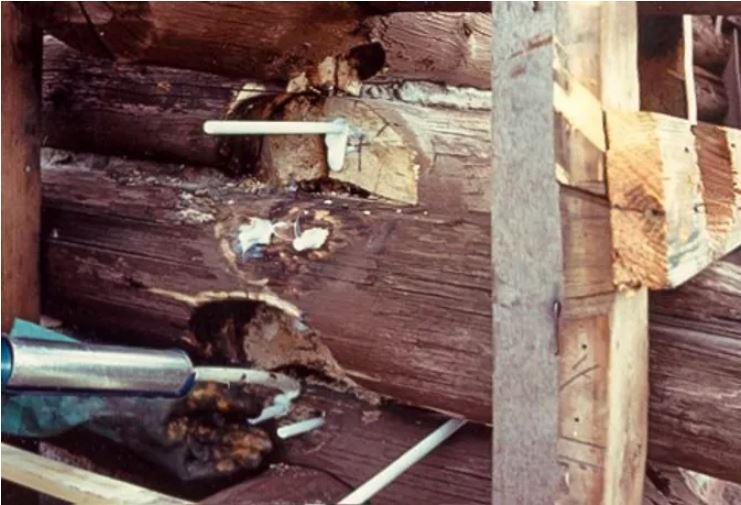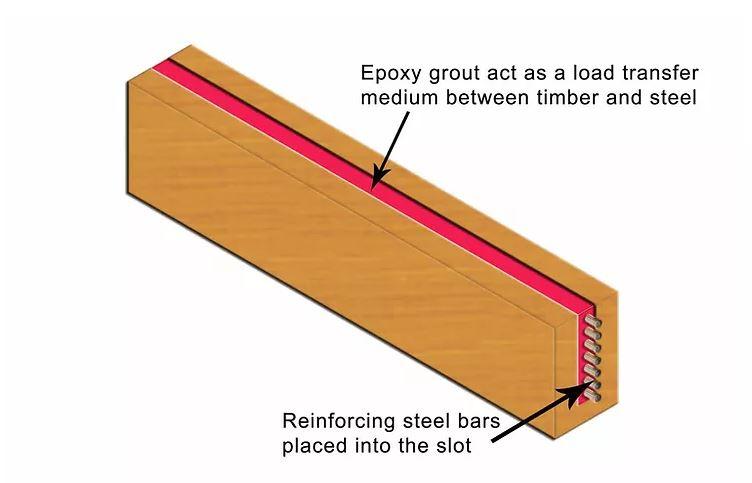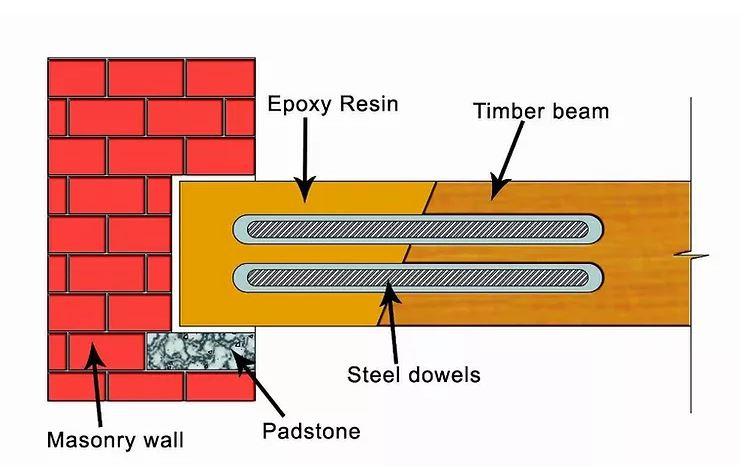Epoxy Resin In Repair Of Timber Members
- 22 Oct 2022
- By Benny Kuriakose

Epoxies are generally two-component systems (a resin and a curing agent) containing siliceous fillers which, when set, are a very hard material. They have a wide range of applications in building construction and other trades. Once cured, none of the resins will revert to a plastic state and all provide a good degree of adhesion. Since epoxy systems have excellent resistance to moisture, they are considered suitable for the repair of timber structures. Different formulated epoxy resins are available for injection into structurally significant fissures in timber members.
"Epoxies have the following generic properties":
- High versatility.
- Long shelf-life.
- Low fire risk.
- Low odour.
- A wide usable temperature range.
- Down to -5°C cure.
- Slow cure rate.
- Cure shrinkage is minimal.
- Excellent adhesion.
- Tough.
(Excerpts from Tony Graham, Resin Bonded Timber Repair And The Preservation Of Historic Timber Surfaces)
The resins became available commercially after the war. Applications such as marine plywood, many manufactured boards, and glued structural joints have depended on the family of thermosetting adhesives for the last fifty years.


1. Is the use of Epoxy Resins in Repair According to the Conservation Principles?
The use of epoxy methods is not reversible. The use of a modern material is permissible in special circumstances where the existing structure is disturbed to a minimum. The epoxy resins should be applied where they do not prejudice future repair methods.
Where it is decided that repair is necessary and the appearance of steel is undesirable, one will have to choose between traditional carpentry techniques and epoxy resins. In many cases, even the carpentry repairs are irreversible and will lead to the dismantling of many of the adjacent timber members. Once applied, the composite of timber and epoxy resin behaves structurally in a similar way to conventional timber.
Timber decay at beam ends or mid-span means that extensive opening up of the structure is required to replace it. Such repairs require the removal of any ceilings, the loss of some floor boarding, and some good pieces may also get damaged in the process. This destructive approach is largely unnecessary in the case of epoxy resin repairs. The following are the advantages of the same.
Low intervention
May reduce the overall cost of repair
Less disturbance to the historic fabric and structure
2. Repairs Using Epoxy
There are a few manufacturers of epoxy resins in India. The repairs should be undertaken by specialist contractors.
Mild steel or stainless steel rods are most commonly used, bonded to the timber using the resins. For a greater bond between the two materials, the surface of the metal should not be smooth.
3.Flitch Plate Design
To upgrade a timber beam, a slot is cut into the top of the beam. The slot is cleaned and the reinforcement steel is fitted. The number of bars depends on the structural engineering calculations. The bars are laid one above the other using spacers to maintain the correct positions. Normally, the majority are placed at the bottom of the beam. Once the bars are fixed, the epoxy grout is poured into the slot. (Image 3)


4. End Repair
The end damaged portion of the timber beam is removed and replaced with epoxy grout. Dowels are inserted in the beam as shown in Image 4


5. Conclusion
When it comes to repairing damaged timber that is not severely enough to need replacement, timber resins are quite effective since it is a localized repair and expenses are lower. Since it is non-porous and cannot be penetrated by water, it is resistant to all of nature's adversities. This indicates that a resin repair is incredibly durable and resistant to moisture and fungus. Epoxy repair should be adopted as the last resort against dismantling and should have maximum retention of historic surface.

This Content has originally written by Benny Kuriakose and published on July 16, 2022.
No Copyright/IPR breach is intended.
Click Here to read the original piece. In case you are owner of this content and want it to be removed mail us at : info@archiinterio.com
Recently Published
loves or pursues or

.jpg)







.jpg)